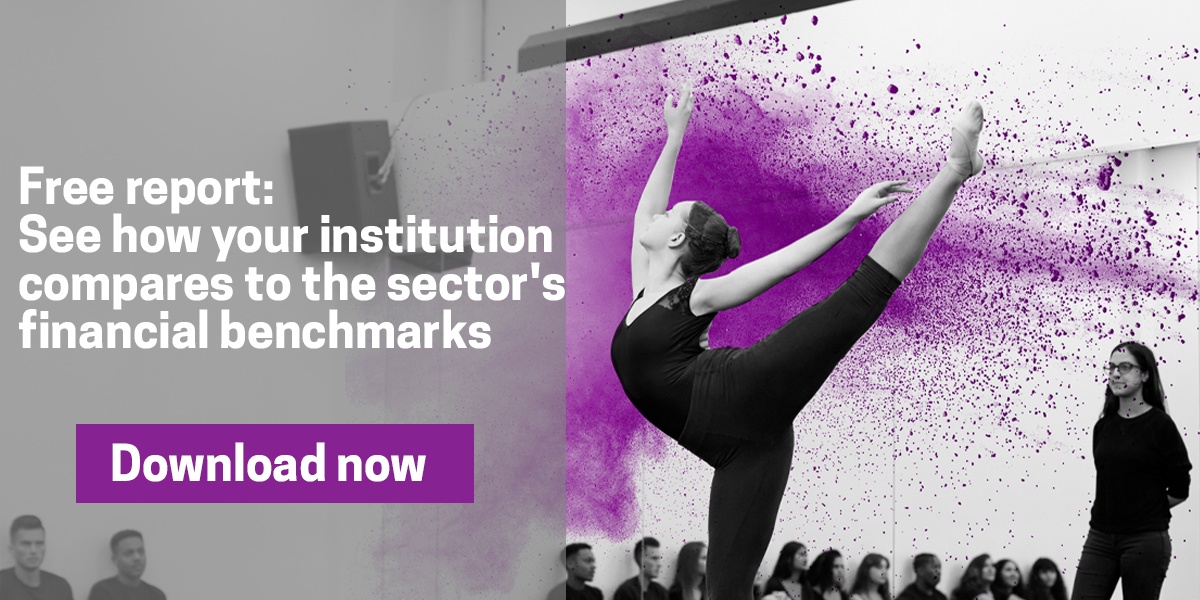Benchmarking has long been considered by strategic leaders in education to be a vital tool for data-driven decision-making. Particularly in times of sector restructure or funding cuts, benchmarking data is used by individual institutions to mitigate risks and stabilise or strengthen their financial position by modelling operations on similar, leaner universities.
Yet where benchmarking is perhaps most powerful, is when it is used to inform education policy and strategy. There are a number of notable examples of this, including in New Zealand, where Higher Education institutions in 2016 used their collective and comparable datasets to provide clear evidence of the relative underfunding in Veterinary Science in comparison to the actual costs of delivery. In this instance, benchmarking-informed collaboration data was used in a proactive way to substantiate and evidence the higher costs of delivery and secure more funding for specific academic areas. (You can read more about this, and other examples, in our global benchmarking whitepaper, “Applying globally accepted and proven benchmarking techniques to tackle today’s post-secondary education challenges”.)
It’s why here at Tribal our Benchmarking team advocates benchmarking as a really powerful way for leaders in education to ‘own the narrative’. And it has never been a more important time to own the narrative in Arts education, with specialist providers as well as creative arts providers at non-research intensive universities destined for further funding cuts. Considered to be in crisis following the Augar Review (that equated course-value with graduate earnings), the challenges of the past 16months post-COVID-19 have already resulted in some closures. Now, the government cuts to high-cost arts and entertainments subjects are, the Public Campaign for the Arts warns,
“threatening the viability of arts courses leading to possible closures, which would in turn damage the pipeline of talent leading from higher education into the creative industries, which are worth £111bn a year to the UK economy.”
Focusing on the cost of education that is required to nurture a pipeline of talent – like New Zealand education providers did when faced with their cuts – is a proactive first step in challenging the plans to preserve funding. Indeed, benchmarking will provide the independent evidence needed for Arts Universities to demonstrate the levels of contribution required to effectively staff, resource, and operate art, design, music, and other creative courses. At the very least, benchmarking will also enable arts education leaders to model the impact of the potential funding changes and to prepare their institutions for what is to come.
Although somewhat isolated in this latest funding struggle, art and design universities could take this opportunity to benefit significantly from benchmarking data provided by other UK Higher Education institutions. HEIs, despite their academic differences, have many things in common, from student services to recruitment, registration, libraries, and IT departments, to name a few of those similarities. Therefore, comparisons can and should be drawn across the Higher Education sector to help arts education leaders either demonstrate they have already ‘right-sized' their operations, or identify opportunities for improvements in financial performance, efficiencies, and productivity, in line with other, similar institutions.
Tribal Benchmarking analyses over 750 benchmark metrics in a model that ‘normalises’ operations and financial structures to provide a comparative analysis of your resources, giving you the financial insight you need to challenge stakeholder assumptions and drive organisational change and/or investment. With separate benchmarking models used for universities and colleges, you benefit from sector-specific comparison, and we have successfully delivered invaluable insights for all sizes and categories of universities.
No type of HEI is beyond comparison, and benchmarking is proven to help improve financial sustainability in the face of funding pressures. So, benchmarking will not only help you illustrate and fully understand the cost of your provision, as well as the financial contribution needed to fund arts courses; it will also highlight how you are different from non-arts focussed universities. In turn, you are able to strengthen and evidence your message that targeting cuts in this way will hit you unduly hard, which may result in you having to discontinue courses.
As many Arts universities and colleges – like University of the Arts London, UCA, and University of Northampton - are in fact leading the way in Higher Education by adopting technology that helps streamline ‘back office’ processes/functions and deliver better student experiences, benchmarking is likely to be a really worthwhile and positive exercise for all the individual institutions involved. Moreover, collating independent and objective evidence to help support key decision-making across the arts education sector could have a more profound effect in terms of influencing educational strategy going forward.
Indeed, the more that benchmarking becomes a part of the UK’s education culture like it is in New Zealand and Australia, the more influence that Higher Education sector leaders will have in shaping government policies and funding.
In the more immediate term, benchmarking provides an independent analysis to help those difficult decisions and conversations faced by institutions. Three such examples can be seen here - Universities turn to financial benchmarking to support robust decision making and optimise their finite resources. Three senior leaders explain why it's so relevant to their institutions. And by also helping those institutions navigate to more financially sustainable waters, we hope leaders are able to avoid having to make those hardest of decisions to cease delivering the courses they have successfully developed and delivered to the benefit of students, the creative industry, and the economy.
Depending on the size of the university or college, a benchmarking project can take as little as 6 weeks to start influencing action planning, with data collection and categorisation currently carried out remotely, and results delivered through onsite or virtual presentations as requested. On average, benchmarking analysis identifies opportunities for savings equivalent to 3% of university/college income.
TOPICS:
SHARE THIS ARTICLE:




